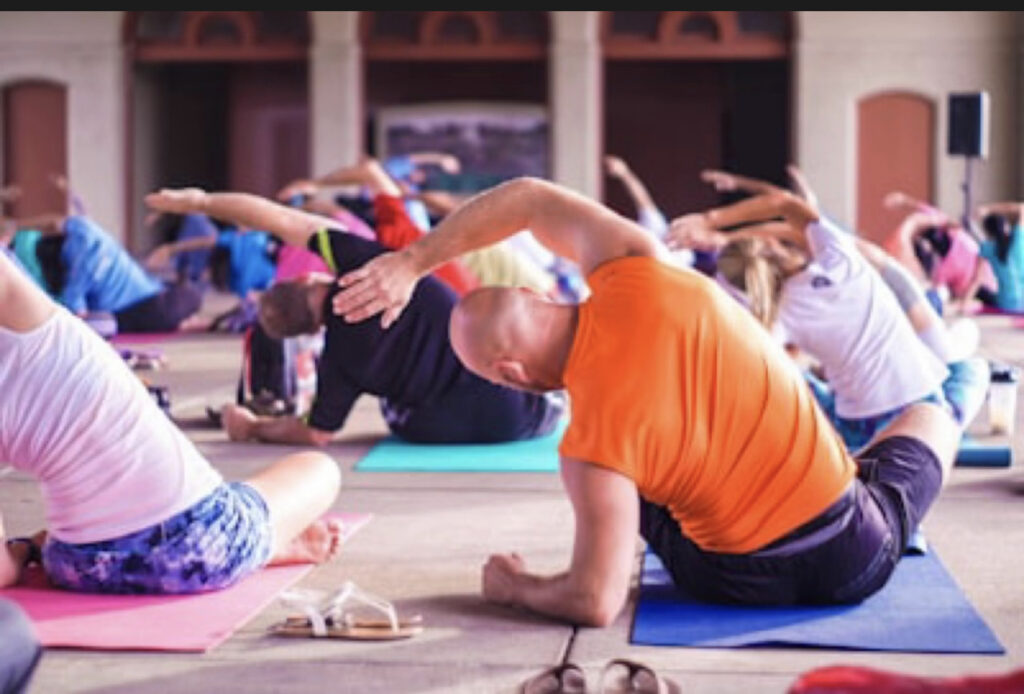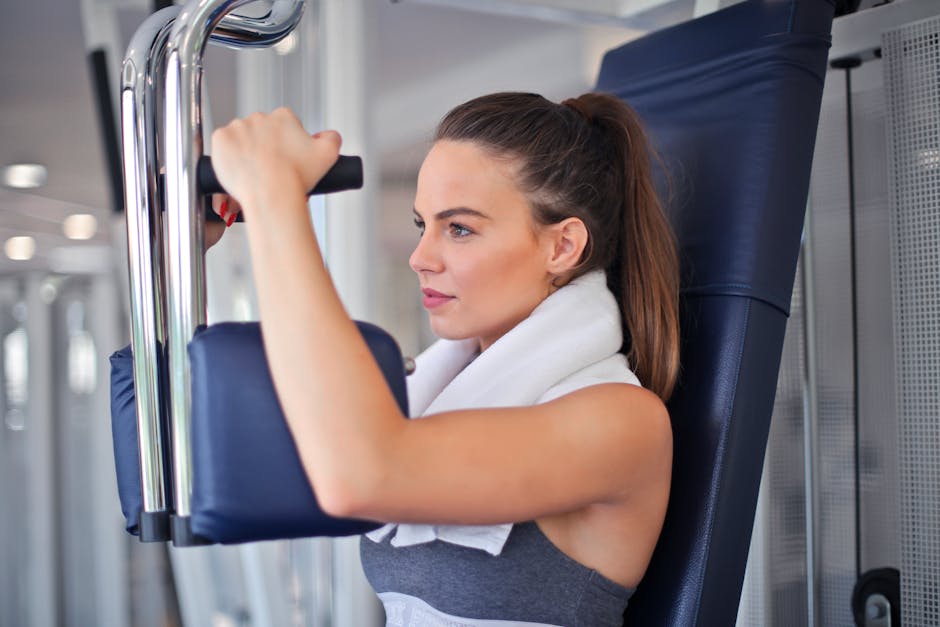Overcoming Barriers to Senior Fitness: A Practical Approach

Importance of Tailored Exercise Programs for Seniors
As we age, staying active and maintaining our physical fitness becomes increasingly important. However, many seniors face barriers that can make it challenging to engage in regular exercise. From chronic health conditions to mobility issues, there are a variety of factors that can make it difficult for older adults to stay active. That’s why it’s crucial for seniors to have access to tailored exercise programs that take into account their unique needs and limitations.
One of the key benefits of tailored exercise programs for seniors is that they can help address specific health concerns. For example, seniors with arthritis may benefit from low-impact exercises that help improve joint flexibility and reduce pain. Similarly, seniors with heart disease may benefit from cardiovascular exercises that help strengthen the heart and improve circulation. By working with a fitness professional who understands their individual health needs, seniors can create a workout plan that is safe and effective for their unique situation.
In addition to addressing specific health concerns, tailored exercise programs can also help seniors overcome mobility issues. Many older adults struggle with balance and coordination, which can make traditional forms of exercise challenging. However, by incorporating exercises that focus on improving balance and stability, seniors can build strength and confidence in their movements. This can not only help prevent falls and injuries, but also improve overall quality of life.
Another important aspect of tailored exercise programs for seniors is that they can be adapted to accommodate different fitness levels. It’s important for seniors to start at a level that is appropriate for their current abilities and gradually progress as they become stronger and more confident. By working with a fitness professional who understands how to modify exercises for different fitness levels, seniors can feel empowered to push themselves while still staying safe and comfortable.
Furthermore, tailored exercise programs can help seniors stay motivated and engaged in their fitness routine. It’s easy to get bored or discouraged when doing the same exercises over and over again. By incorporating a variety of activities and workouts into their routine, seniors can keep things interesting and challenging. Whether it’s trying a new class, working with a personal trainer, or joining a group exercise program, there are plenty of options available to keep seniors motivated and excited about their fitness journey.
Overall, tailored exercise programs are essential for helping seniors overcome barriers to fitness and achieve their health and wellness goals. By addressing specific health concerns, improving mobility, accommodating different fitness levels, and keeping seniors motivated, these programs can make a significant impact on the physical and mental well-being of older adults. If you’re a senior looking to improve your fitness, consider working with a fitness professional to create a tailored exercise program that meets your needs and helps you stay active and healthy for years to come.
Strategies for Motivating Seniors to Stay Active
As we age, staying active becomes increasingly important for maintaining our overall health and well-being. However, many seniors face barriers that can make it challenging to stay motivated and engaged in regular physical activity. From physical limitations to lack of access to resources, there are a variety of factors that can hinder seniors from staying active. But with the right strategies and a practical approach, it is possible to overcome these barriers and help seniors lead a more active lifestyle.
One common barrier that many seniors face is physical limitations. As we age, our bodies naturally experience changes that can make it more difficult to engage in physical activity. Joint pain, muscle stiffness, and decreased mobility are just a few of the challenges that seniors may encounter. However, it is important to remember that physical activity can actually help improve these conditions. By engaging in regular exercise, seniors can strengthen their muscles, improve flexibility, and reduce pain. It is important to start slowly and gradually increase the intensity of the exercise to avoid injury.
Another barrier that seniors may face is a lack of access to resources. This can include limited transportation options, financial constraints, or a lack of knowledge about available programs and services. However, there are many resources available to help seniors stay active. Local community centers, senior centers, and gyms often offer discounted or free exercise classes specifically designed for seniors. Additionally, many insurance plans cover the cost of gym memberships or fitness programs. By taking advantage of these resources, seniors can find the support and motivation they need to stay active.
One of the most effective strategies for motivating seniors to stay active is to make exercise fun and enjoyable. Many seniors may view exercise as a chore or a burden, but it doesn’t have to be that way. By finding activities that they enjoy, such as dancing, swimming, or gardening, seniors are more likely to stick with their exercise routine. Group classes and social activities can also help make exercise more enjoyable and provide a sense of community and support.
Setting realistic goals and tracking progress is another important strategy for motivating seniors to stay active. By setting achievable goals, such as walking a certain number of steps each day or attending a fitness class once a week, seniors can stay motivated and focused on their fitness journey. Keeping track of their progress, whether through a fitness app or a simple journal, can help seniors see how far they have come and provide a sense of accomplishment.
In conclusion, staying active as a senior may come with its challenges, but with the right strategies and a practical approach, it is possible to overcome these barriers and lead a more active lifestyle. By addressing physical limitations, accessing available resources, making exercise fun and enjoyable, and setting realistic goals, seniors can stay motivated and engaged in regular physical activity. It is never too late to start prioritizing your health and well-being, and by taking small steps towards a more active lifestyle, seniors can enjoy the many benefits that come with staying active.
Overcoming Common Physical Limitations in Senior Fitness
As we age, it’s common to experience physical limitations that can make staying active and fit a challenge. However, it’s important to remember that with the right approach and mindset, these barriers can be overcome. In this article, we’ll explore some common physical limitations that seniors may face when it comes to fitness, and provide practical tips on how to overcome them.
One of the most common physical limitations that seniors face is joint pain and stiffness. This can make it difficult to engage in activities that require a lot of movement, such as running or jumping. However, there are plenty of low-impact exercises that can help improve flexibility and reduce joint pain. Activities like swimming, yoga, and tai chi are great options for seniors looking to stay active without putting too much strain on their joints.
Another common physical limitation that seniors may face is decreased muscle mass and strength. As we age, our muscles naturally weaken, which can make it harder to perform everyday tasks and stay active. To combat this, it’s important to incorporate strength training exercises into your fitness routine. This can help build muscle mass, improve balance, and prevent falls. Simple exercises like squats, lunges, and bicep curls can be done with light weights or resistance bands to help strengthen muscles.
Balance and coordination are also important factors to consider when it comes to senior fitness. As we age, our balance can deteriorate, increasing the risk of falls and injuries. To improve balance and coordination, try incorporating exercises that focus on stability and core strength. Activities like standing on one leg, heel-to-toe walking, and using a balance board can help improve balance and reduce the risk of falls.
In addition to physical limitations, seniors may also face mental barriers when it comes to staying active. It’s common to feel discouraged or overwhelmed by the thought of starting a new fitness routine, especially if you haven’t been active in a while. However, it’s important to remember that it’s never too late to start taking care of your health and well-being. Start small and set realistic goals for yourself. Whether it’s going for a daily walk, attending a fitness class, or trying a new activity, taking that first step is the most important part.
It’s also important to listen to your body and make modifications as needed. If you’re experiencing pain or discomfort during exercise, don’t push through it. Take a break, modify the exercise, or try a different activity that feels better for your body. It’s important to find activities that you enjoy and that make you feel good, both physically and mentally.
In conclusion, overcoming physical limitations in senior fitness is possible with the right approach and mindset. By incorporating low-impact exercises, strength training, balance and coordination exercises, and setting realistic goals for yourself, you can stay active and fit well into your golden years. Remember to listen to your body, make modifications as needed, and most importantly, have fun with your fitness routine. Stay active, stay healthy, and enjoy the benefits of a fit and active lifestyle.

